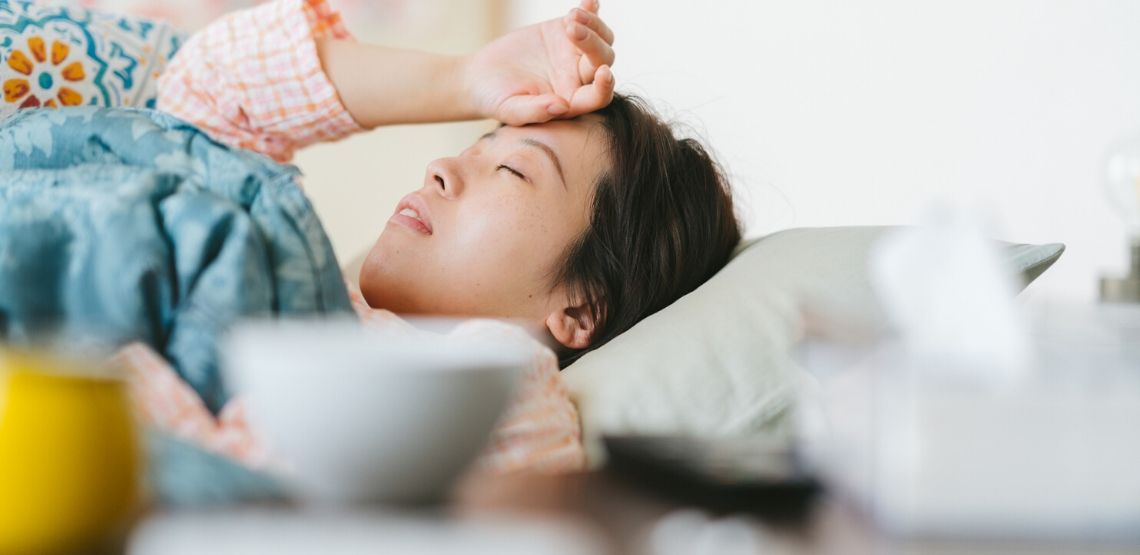What to Know About Walking Pneumonia
You may have heard the term walking pneumonia. But what is walking pneumonia and is it any different from other types of pneumonia? Keep reading to find out.
What is Walking Pneumonia?
Walking pneumonia is the non-medical term used for atypical pneumonia. It involves infection and inflammation in the lungs. It also refers to a relatively mild form of pneumonia. Typically, pneumonia can lead to significant illness. In some cases, it even requires hospitalization and can lead to complications, such as respiratory failure.
Usually, walking pneumonia is less severe. People who have the condition may not even realize they have pneumonia. In fact, many people may go about their regular routine, which is how the condition earned its name.
Walking pneumonia is a common illness. According to the Cleveland Clinic, walking pneumonia is caused by a pathogen called mycoplasma pneumoniae, which accounts for 10% to 40% of pneumonia cases. According to Stanford Medical Center, about two million people develop walking pneumonia in the U.S. each year. It is also the most common form of pneumonia is school-age children.
Causes of Walking Pneumonia
Other forms of are caused by viruses, bacteria and fungi. This type is mostly caused by mycoplasma pneumoniae, which is a type of bacteria. This type of bacteria lives in the nose, lungs, and throat. It can be spread from person to person by breathing in the droplets from a sneeze or cough from someone who is infected. Less often, walking pneumonia is caused by other types of bacteria, including chlamydia pneumonia.
Signs and Symptoms of Walking Pneumonia
Symptoms of this condition are similar to other types, but they are milder.
Typical symptoms include:
- Dry cough
- Headaches
- Chest discomfort
- Low-grade fever
- Mild breathlessness
Although symptoms of walking pneumonia are milder than other forms of pneumonia, there is a possibility that it can become worse. It is possible for this type to develop into a more serious form of pneumonia. It is also more likely to become more severe in adults over 65 and those with a compromised immune system.
Signs that walking pneumonia might be becoming more serious include:
- Increasing shortness of breath
- Increased mucus, which may or may not be brown or green
- High fever
- Chest pain
Related Search Topics (Ads)
What Are the Risk Factors?
Anyone can develop walking pneumonia, but there are certain risk factors that increase your chances of becoming infected, including:
- Being over the age of 65
- Being under the age of two
- Having a weakened immune system
- Having COPD or another lung disease
- Smoking or exposure to secondhand smoke
- Living in a crowded environment, such as a nursing home or dorm
- Using inhaled steroids for an extended time
Diagnosing Walking Pneumonia
A diagnosis is usually made after a physical exam by a doctor and a symptom review. Since symptoms can be similar to other forms, a chest x-ray is usually performed. A chest x-ray helps the doctor determine the extent of the infection.
Treatment for Walking Pneumonia
Treatment is usually done on an outpatient basis. Treatments may include the following.
Antibiotics
Different types of antibiotics may be used, and several varieties are effective. For example, a class of drugs called macrolide antibiotics, such as Zithromax, are often prescribed to treat the infection when it is due to mycoplasma pneumoniae.
Other types of antibiotics may also be used, including Cipro, which belongs to a class of drugs called fluroquinolones. But this type of antibiotic is not recommended for young children. The prescribed antibiotic may depend on the bacteria causing the illness, the age of the patient, and any other underlying health conditions they may have.
If a fever is present or aches and pains, over the counter pain medications can help.
Cough Medications
Often, coughing is a symptom. It can be dry or produce phlegm. Getting the mucus out of the lungs is helpful, so cough suppressants are not always recommended. But cough medication may be useful at night to allow you to get to sleep.
Fluids and Rest
People will all types of pneumonia, people should drink plenty of fluids to prevent dehydration.
Rest is also an essential component of treatment. Getting enough sleep and not stressing your body too much by overworking it is helpful to allow your immune system to do its job and help you recover.
Nasal Decongestants
In some cases, nasal or chest congestion can occur. An over the counter nasal decongestant may help reduce stuffiness.
Humidifier
If a cough is producing mucus, a cool-mist humidifier may help loosen mucus, so it can be coughed out of the lungs easier. Be sure to use sterile water when using a humidifier.
In Conclusion
Most people with walking pneumonia recover without serious complications. Symptoms often clear up in about a week. People who have a weakened immune system or have other lung diseases may experience symptoms for a little longer.
If your symptoms get worse or do not go away, be sure to seek a doctor, as they can help diagnose and treat you.


